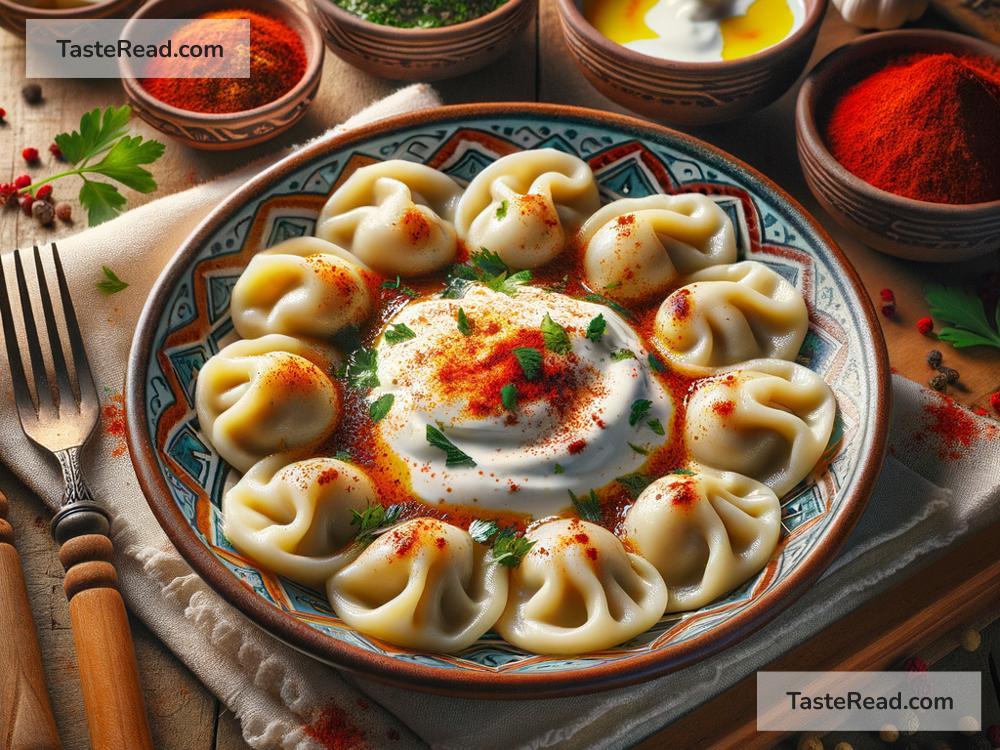Exploring the Time-Honored Traditions of Turkish Manti Dumplings
Turkish cuisine is full of delicious dishes that reflect the country’s rich history and culture. Among these treasures is a dish known as manti, a type of dumpling that has been enjoyed for centuries. Simple yet packed with flavor, manti holds a special place in Turkish cooking and family life, offering a glimpse into the traditions that make this food so extraordinary.
What Is Manti?
Manti are small, handmade dumplings, often filled with spiced ground meat, typically lamb or beef. They are traditionally served boiled or steamed and topped with a tangy yogurt sauce, melted butter infused with paprika, and sometimes a sprinkle of dried mint or sumac for extra flavor. The combination of tender dumplings, creamy sauces, and savory spices creates a dish that is truly satisfying.
Although manti is a Turkish staple, its origins trace back to Central Asia. It was introduced to Anatolia, the heartland of modern Turkey, by Turkic nomads as they traveled westward centuries ago. Over time, manti evolved and adapted to local tastes, becoming a beloved dish in Turkish households across generations.
The Art of Making Manti
Preparing manti is not just about cooking — it’s about connecting with loved ones and celebrating culinary traditions. Making manti by hand is a labor-intensive process, but it’s one that brings families together. In many Turkish homes, preparing manti is a communal activity, with multiple family members gathered around the table to help.
The process begins with making thin dough, which is rolled out and cut into small squares. Each square is carefully filled with a tiny pinch of spiced meat before being folded and pinched into shape. Traditionally, Turkish manti dumplings are very small, and some cooks pride themselves on creating dumplings as tiny as a fingernail. Smaller dumplings are a sign of skill and dedication, and there’s even an old saying in Turkey: “The smaller the manti, the greater the love.”
Once the dumplings are shaped, they are cooked in boiling water or steamed until tender. Preparing manti is a slow and thoughtful process, reflecting the importance of patience and craftsmanship in Turkish cooking.
Regional Variations of Manti
While the basic idea of manti is the same across Turkey, there are regional variations that make the dish even more interesting. In some parts of the country, manti is served with tomato sauce instead of yogurt, while others incorporate chickpeas or different spices into the filling. One notable variation comes from Kayseri, a city in central Turkey that is famously known for its manti. Kayseri-style manti dumplings are especially tiny and are often served with yogurt, garlic, and butter sauces.
In Eastern Turkey, manti has a unique twist: it’s sometimes steamed rather than boiled and served with toppings like minced onion and ground sumac for a tangy flavor. In other regions, manti may even be baked for a golden, crispy texture that adds a whole new depth to the dish. No matter where you enjoy manti, each variation has its own charm and distinct characteristics.
Manti as a Cultural Tradition
Manti isn’t just a meal; it’s a cultural experience. In Turkish households, making manti can be a way to pass down family recipes and bond across generations. Many Turkish mothers and grandmothers teach their children how to prepare manti, ensuring that the tradition continues.
Manti is also a dish that brings people together. At large gatherings or celebrations, it’s common for families to prepare enormous amounts of manti to share with guests. It’s a symbol of hospitality and generosity, values deeply rooted in Turkish culture. Whether it’s served on a quiet night at home or during a festive occasion, manti carries a sense of togetherness and connection.
Where to Try Manti
If you’re visiting Turkey, you’ll find manti on menus everywhere, from small neighborhood restaurants to gourmet establishments. To sample traditional manti, consider visiting Central Anatolia, particularly Kayseri, where the dish is made with exceptional skill. Street vendors and local markets are also great places to discover home-style manti made with authentic ingredients.
Alternatively, making manti at home can be a fun way to enjoy this dish while exploring Turkish culture. While homemade manti may take time to prepare, the rewarding flavors and sense of accomplishment are well worth it.
A Dish That Stands the Test of Time
Manti dumplings have come a long way from their origins in Central Asia. Over centuries, they have become a cherished part of Turkish cuisine, representing not only exquisite flavors but also the values of family, hospitality, and tradition. Whether made by hand at home or enjoyed at a local restaurant, manti invites everyone to slow down, savor each bite, and experience the warmth of Turkish culture.
If you’re a lover of dumplings or just curious about Turkish food, manti is a dish you won’t want to miss. With its rich history, delicious flavors, and heartfelt tradition, manti proves that food is so much more than just nourishment — it’s a way of preserving culture and sharing happiness.


